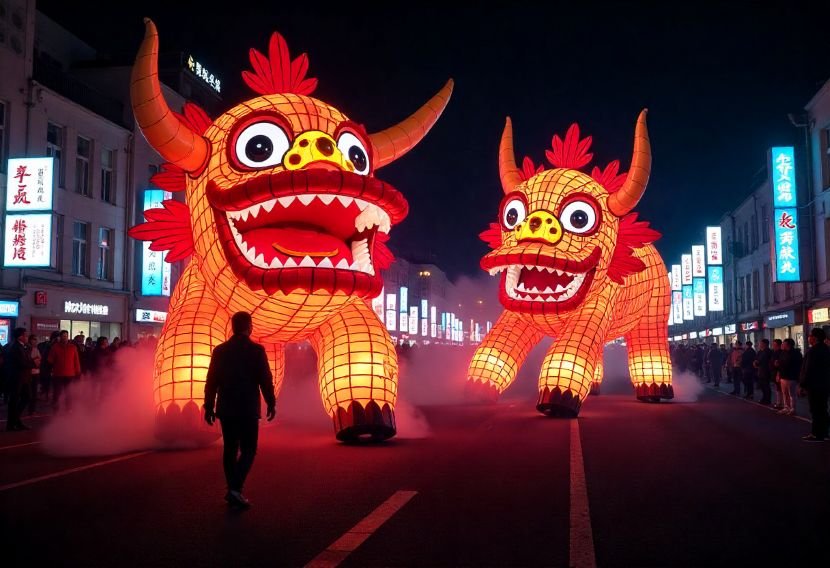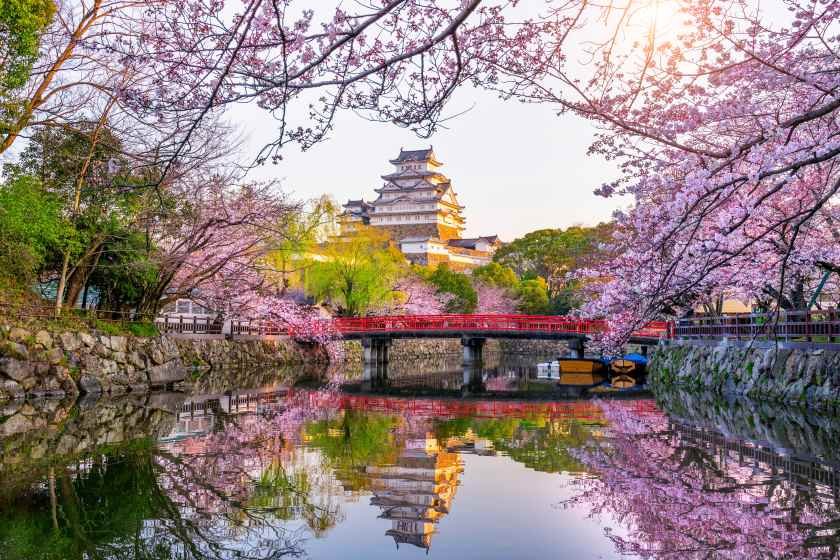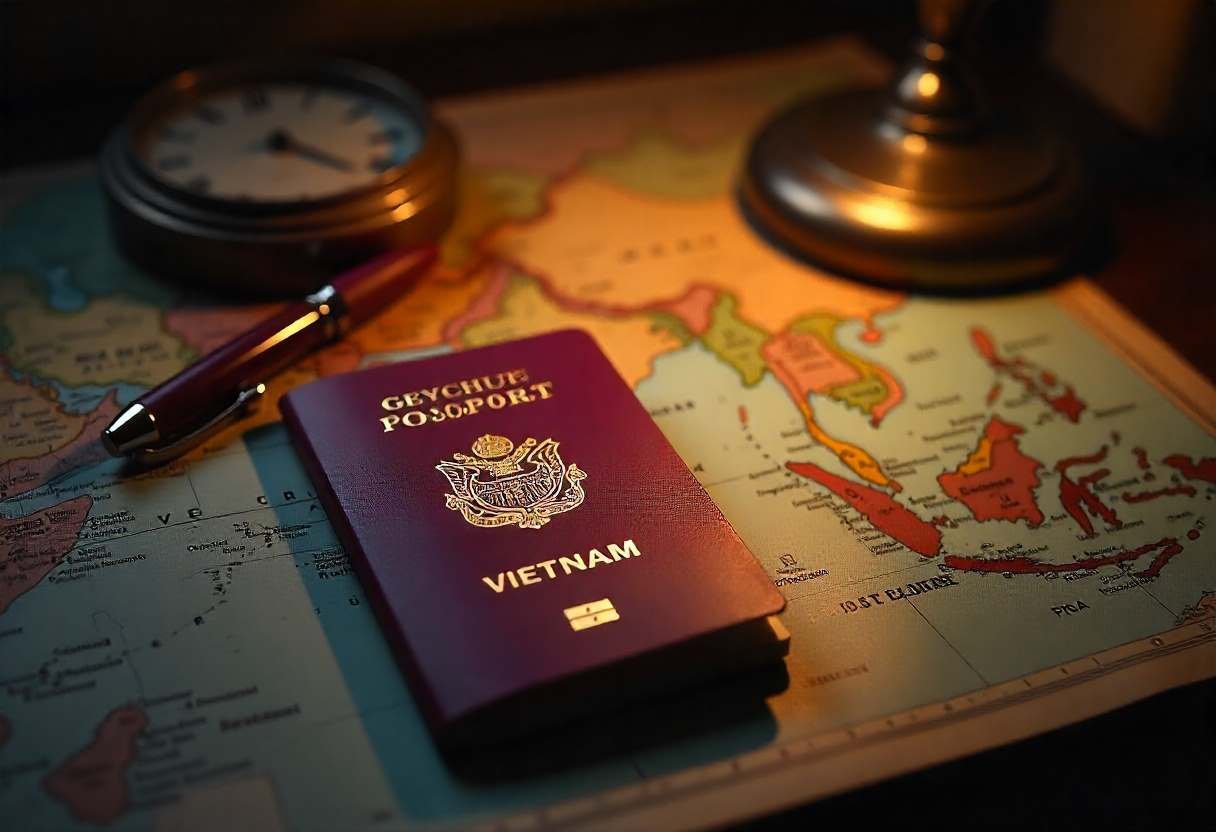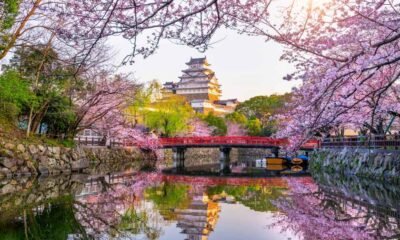Asia Travel Pulse
Now, Japan Unifies With Malaysia, Mongolia, and Indonesia to Celebrate Iconic Festivals in July and August in Asia: Here’s What You Need to Know For An Unmissable Experience

Tuesday, July 22, 2025
This summer, there is something in the air in Asia — culture. Festivals and arts programs are tak ling place across the region, which means travelers carry their choice of everything from blockbuster events to timeless traditions. From centuries-old religious observances to adrenaline-fueled music festivals in July and August in Asia events will turn you into an instant participant in the region’s rich culture and lively vibe. Here’s a pick of something for nearly every sort of traveler wishing to make merry all across Asia in Japan, Malaysia, Mongolia, and Indonesia.
Gion Matsuri, Japan (Throughout July)
Gion Matsuri is Kyoto’s (Japan’s) largest and most well-known festival, runs throughout the month of July. Back to Top The festival commemorates the Yasaka Shrine and showcases spectacular parades of lavishly decorated floats, which are pulled through the streets by local residents. Visitors can also experience traditional performances, street food stalls and a nightly illumination that lend an ethereal feel to the ancient city.
Why Go to Japan in July: The Gion Matsuri mixes old traditions with new day partying. The stunning floats and traditional street parades make this festival not-to-miss for history and culture enthusiasts.
George Town Festival, Malaysia (July 15 to August 15)
George Town Festival in Malaysia is a one month long event dedicated to the arts, culture and heritage of Penang. This month-long annual festival, held from July 15 to August 15, features theatrical performances, dance concerts, art exhibits and much more. Held within the UNESCO World Heritage site of George Town, this festival animates the tapestry of Penang’s diverse cultures.
Why you should go: George Town Festival is great for those who love local arts and culture. A celebration with live stage shows and displays that demonstrate Penang’s historical grace and contemporary verve.
Fuji Rock Festival, Japan (July 25th-27th)
The event, the Fuji Rock Festival in Japan, which took place from July 25 to 27, is one of the most high-profile music festivals in Asia. Held at the Naeba Ski Resort, the festival showcases international music artists and takes place in picturesque environs nestled among forests and mountains. This open-air extravaganza includes acts in all genres, from rock to electronic.
Why Go To Fuji Rock Festival In Japan: Nature is stunning at Fuji Rock and they bring down any type of music so that anyone can love it. It’s the best and perhaps the only way to see Japan’s beauty through its colorful music scene.
Nebuta Matsuri, Japan (August 2-7)
The mayhem happens in Aomori City, Japan with Nebuta Matsuri, an extravaganza of massive lantern floats sporting bright figures of samurai warriors and ancient gods. Throughout the festival, the floats – and its accompanying revellers – are hauled along the streets in a kaleidoscope of light and colour by thousands of dancers and musicians.
Why Visit Japan in August: Nebuta Matsuri is a stunning display of artistry and heritage. It will be an entertaining experience with vivid lantern floats and exciting performances, so tourists can enjoy the Japanese summer festivals.
Baliem Valley Festival — Indonesia (August 7th to 9th)
Baliem Valley Festival, Papua, Indonesia Held from August 7 to 9, the Baliem Valley Festival showcases the culture of the Dani Tribe. This festival presents mock warfare as well as the common breaking of the enemies’ heads, pork feast and other performances of the Ahom tribe.
Why Go To Indonesia In August: You get to meet the Dani Tribe in their true element and explore the wild, untamed terrain of Indonesia. This festival is a must see for anyone looking for a unique cultural experience.
O-bon Festival, Japan (August 13-15)
O-bon is among Japan’s most important festivals, occurring over the 13th to 15th August. It is an observance dedicated to remembering the spirits of ancestors, and is characterized by lantern lightings, or bon dances and grave visits. They return to their hometown to honor the dead and rejoice in their lives.
Why go to Japan in August: O-Bon is a revealing introduction into the Japanese world of spirituality and family connections. The festival is a moment of reflection and intention that continues the bond between visitors and their heritage of Japanese traditions and ancestors.
Yamaga Lantern Festival, Yamaga, Japan (Aug. 14-15)
Established in Yamaga, Japan, the Yamaga Lantern Festival is a stunning event in which thousands of lanterns illuminate the city. Tourists will be treated to folk dance performances and serene lantern-lit streets.
Why attend Japan Yamaga Lantern Festival: In Game Donegal This is a calm, small, peaceful festival compared to the other Japan itself lantern festival writings. The streets are lantern-lit, with graceful dances for an atmosphere of peace and magic.
Is it Worth Going to Asia in July and August?
In July and August, Asia’s cultural festivals introduce travelers to the traditions and heritages of the region. Whether you’re taking part in Japan’s Gion Matsuri, witnessed Mongolia’s Naadam Festival, or indulged in Penang’s artworks at the George Town festival, each offers something for the traveler. They offer cultural immersion, and opportunities to meaningfully connect with local customs.
Travel Tips:
- Make sure to book well ahead to secure your spot at these exhilarating festivals and get a taste of Asia’s colorful culture yourself. Every festival has its own flavour and ethos that captures a regional spirit.
- As these festivals attract huge crowds, securing your accommodation well in advance is crucial. Popular cities like Kyoto, Aomori, and Puri get booked up quickly. Look for alternative options like staying in traditional ryokan in Japan or guesthouses in Penang for a more local experience.
- For festivals like the Gion Matsuri and Naadam, you’ll be walking a lot. Comfortable shoes are a must, and lightweight clothing is essential, especially in warmer climates like Penang and Mongolia. Make sure to pack an extra layer in case of cooler evenings.
- In festivals like O-bon, understanding the local traditions can help you be respectful. In O-bon, for example, visitors often wear traditional clothing like yukata.
- While some festivals in big cities accept card payments, in Mongolia or Papua Indonesia, it’s wise to have cash on hand, especially in remote areas.
- In cities like Kyoto during Gion Matsuri, public transportation can be quite crowded. Book tickets in advance for buses and trains or consider walking if you’re staying nearby. In Mongolia’s Naadam, renting a car may be a great option for reaching rural competition sites.
- Whether it’s a simple “hello” or “thank you” in Mongolian or Japanese, learning a few phrases can go a long way in making local connections.
- Given the large crowds and outdoor activities at festivals, including horse racing at Naadam or archery in Baliem Valley. Purchasing a travel insurance is a good idea that covers potential cancellations, health issues, or lost belongings.
Tags: Aomori, Baliem Valley, Baliem Valley Festival, cultural festivals, Fuji Rock Festival, George Town Festival, Gion Matsuri, Indonesia festivals, Japan festivals, Kyoto, Malaysia festivals, Mongolia Naadam, Nebuta Matsuri, O-bon, penang, Tanabata, tourism Asia, Ulaanbaatar, Yamaga Lantern Festival
Asia Travel Pulse
The Witcher In Concert To Make Asian Debut In Singapore: Details Inside

Fans of dark fantasy and epic soundtracks, mark your calendars! The Witcher In Concert is set to make its highly anticipated Asia debut in Singapore with two exclusive performances at the Sands Theatre, Marina Bay Sands, on November 29 and 30, 2025. The concert marks the 10th anniversary of The Witcher 3: Wild Hunt, the award-winning action role-playing game that has captivated over 75 million players worldwide. Following a successful tour through North America and Europe, the live orchestral production now arrives in Asia, with Singapore as its first stop.
Also, bookmark our guide to the most stunning locations in Singapore for an IG-forward exploration of the city.
The Witcher In Concert comes to Singapore: What to expect
The Witcher in Concert is coming to Asia! First stop: Singapore! 🎻
For the first time in Asia, the iconic music of The Witcher 3: Wild Hunt will be performed live, and it’s all happening in Singapore still this year!
The concerts will take place at the Lyric Theatre on… pic.twitter.com/rGuOW550g4
— The Witcher (@thewitcher) July 23, 2025
Presented by Base Entertainment Asia in collaboration with CD Projekt Red, Gea Live and RoadCo Entertainment, the event brings the music and story of The Witcher to life. Tracks are arranged by The Witcher 3 co-composer Marcin Przybyłowicz and performed by a live ensemble orchestra. Joining them on stage is Polish folk metal band Percival Schuttenbach, whose musical contributions helped shape the game’s distinctive score.
The concert follows Geralt of Rivia’s quest to find his adopted daughter Ciri, offering fans an atmospheric and emotionally charged journey through the world of The Continent. The Witcher in Concert performance in Singapore runs for two hours, including a 20-minute intermission.
- Where: Sands Theatre, Marina Bay Sands, 10 Bayfront Avenue
- When: November 29 at 2 pm and 7:30 pm; November 30 at 6:30 pm
- Admission: From SGD 92 (USD 71)
- Early bird offers are available to Development Bank of Singapore (DBS) and Post Office Savings Bank (POSB) Cardmembers and Singtel subscribers from July 23 to August 31, 2025. Tickets are available via the official show, Marina Bay Sands, Sistic, and Klook.
(Feature image credit: The Witcher/Facebook)
Related | Music Concerts And Festivals In Singapore That Should Be On Your Radar In 2025
Note:
The information in this article is accurate as of the date of publication.
Written By
Asia Travel Pulse
Japan now Issues Heightened Travel Advisory for Thailand-Cambodia Border Amid Military Tensions

Sunday, July 27, 2025
The Ministry of Foreign Affairs of Japan, in the light of the recent military confrontations between the Kingdom of Thailand and the Kingdom of Cambodia, raises the travel warning (level 2) previously issued for the Thailand-Cambodia border to level 3, advising Japanese nationals not to travel to the area. The advisory extends to any area within 50 kilometers of the Thai border, or within 30 kilometers of the Cambodian border.
The surge in violence, which began on Thursday, has left over 30 people dead and more than 110,000 forced to flee and as of now, there have been no deaths of Japanese citizens. Japan has warned its citizen about travel to the region and remains in close contact with the situation.
Details of the Ongoing Conflict
The fighting broke out as a result of a territorial dispute between Thailand and Cambodia over the disputed border near the Ta Muen Thom temple. The disagreement has resulted in heavy fighting that has involved artillery, landmines and airstrikes. Each side accuses the other of crossing territorial lines, and the violence has led to heavy casualties for both sides. There have been growing international calls for a ceasefire, but the fighting rages on despite the desperate appeals.
In addition to concerns about citizens and foreign nationals living and being in the affected areas on both countries, considerations have also been abroad for foreigners visiting in the battlefield regions, such as tourists and business travelers. Thailand-Cambodia border crossing is an outlet for tourists in Southeast Asia to visit the historical and cultural options available in both countries. The conflict has not only upended daily life but also the region’s tourism industry, with possible ripple effects for travel in Southeast Asia in the future.
Japan’s Travel Advisory and Recommendations
The latest fighting prompted Japan’s Foreign Ministry to issue a Level 3 travel advisory for the vicinity of the Thailand-Cambodia border. The warning urges Japanese to cancel or postpone travel to the region, and if currently in the affected areas to exercise extra caution.
There are roughly 450 Japanese people living in the disaster areas, the ministry added. The Japanese embassy has been helping its citizens with possible support, and those in need of help are requested to contact the embassy. The embassy also urges Japanese citizens to stay in contact with their embassies to keep abreast of the situation and to receive assistance quickly in case of need.
Based on the writing, the Ministry still recommend its people to avoid border area until something changes. They also advise that Japanese citizens get the latest information from local news and to comply with instructions provided by the local authorities, and not to make any unnecessary trips.
Tourism Impact and Border Closures
The continuing war has serious implications for tourism in the area. The border between Thailand and Cambodia is a major gateway for tourists who come to see ancient monuments, such as the Unesco World Heritage-listed Angkor Wat in Cambodia and the cultural sites in the Thai provinces bordering the northeast.
Closing of vital border points, including common transit points for international passengers, has also been temporarily halted due to the current military clashes. This has disrupted the tourist flow between the two countries, and resulted in a major disruption of cross-border travel. Tour operators and travelers have been urged to verify border crossings before booking.
Both countries are popular to tourists – and millions are attracted there every year to take in the rich fare of their exotic cultures and picturesque regions. Tourism flow in the region is likely to be disrupted as the war persists. Each story is harrowing, yet real. It is a must read for travelers who had plans to visit either Thailand or Cambodia, especially along the border or the vicinity, to temporarily postpone their plans until all is settled.
In addition, travel-related disruptions can impact the hospitality sector, such as hotels, restaurants and transport services, especially in border areas. The Thai and Cambodian tourist industries are cooperating with local officials to ensure tourists can still visit other parts of each country safely.
Global Response and Attempts to Control the Epidemic
The escalating conflict has drawn concern from the international community, led by the U.N. and the Association of Southeast Asian Nations (ASEAN). ASEAN demands ceasefire talks and asks both Thailand and Cambodia to reduce tensions. The US has also reiterated support for diplomatic and peaceful resolutions to the dispute.
For visitors, these diplomatic endeavors might just pay off in a more stable region. If ASEAN can help broker cease fire or resolution then may be travellers can return again as safe to travel. Tourists are advised to keep an eye on the news and government statements if they are travelling in the region and stay updated on any changes in travel recommendations and border situations.
What the Ongoing Clashes Mean for Tourists
While the travel advice only applies to Japanese, it is also part of the wider fallout from the hostilities that are hitting the entire Southeast Asian tourism sector. Foreign visitors who might have hoped to add the site to their travel itineraries, particularly tourists from overseas who have been drawn to Cambodia or Thailand’s northeastern provinces for cultural experiences, have been rethinking their plans due to the conflict.
Beyond the border closures, the violence has halted transport services such as buses, trains and flights, especially in the affected regions. International airlines flying in and out of the area have had to modify their timetables to meet fluctuations in demand and travelers should check for any cancellations or delays before leaving.
Conclusion
Japan’s Foreign Ministry says escalating violence at the border between Thailand and Cambodia has forced it to issue a Level 3 travel warning to its citizens, advising them not to travel to the disputed area. As a result of the conflict, the tourism flow between Thailand and Cambodia has been crippled, with many locals dependent on the travel and entertainment industries being forced to give up on their lives.
Travellers intending to be in the area are encouraged to stay informed of the situation and make their travel plans accordingly. The tourism sectors of Thailand and Cambodia are likely to be affected by the conflict in the short term, but international organizations and diplomatic discussions could restore stability to the region. As circumstances evolve, travelers should visit official government sources for the most current information on travel advisories and the statuses of their border crossings.
(Source: Japan Tourism.)
Asia Travel Pulse
Vietnam Rises in Global Passport Index, Now Offering Fifty One Visa-Free Travel Options

Sunday, July 27, 2025
Vietnamese passport holders now enjoy significantly greater global travel freedom, with the country ranking 84th in the latest Henley Passport Index and gaining access to 51 destinations without a traditional visa. This elevation reflects Vietnam’s growing diplomatic integration and efforts to streamline passport systems.
For students heading abroad, families planning holidays, businesspeople attending overseas conferences, and workers seeking opportunities, this news opens doors and simplifies travel planning in ways that matter personally.
Government Confirmation & Index Methodology
Vietnam’s leap from 91st to 84th place in the Henley Passport Index was publicly endorsed by the Vietnam Government Portal (VGP). Official statements confirm that Vietnamese citizens can now enter 51 out of 227 destinations visa-free or with e‑Visa, electronic travel authorization, or visa-on-arrival arrangements.
The Henley Passport Index, published quarterly, tracks global mobility using exclusive data from the International Air Transport Association (IATA). It rates passports based on travel freedom, measuring access to destinations without needing a visa in advance.
What This Improvement Means for Citizens
Vietnam’s improved ranking is the result of active diplomacy, upgraded biometric passports issued since 2023, and enhanced trust from foreign governments. These elements opened new unilateral visa arrangements and strengthened international confidence in Vietnamese travelers.
For individuals, this means fewer visa interviews or embassy visits and simplified routes to studying, working, or touring abroad. As outbound travel surged—over 4 million Vietnamese travelers in the first half of 2025 (up nearly 54% year-on-year)—faster entry procedures support mobility and align with rising demand.
Visa-Free Destinations: Regional and Global Access
Vietnamese passport holders can travel to a broad range of countries without prior visa arrangements, including:
- ASEAN nations: Thailand, Indonesia, Malaysia, Singapore, the Philippines, Laos, Cambodia, Myanmar
- Central & South Asia, Middle East: Kyrgyzstan, Kazakhstan, Tajikistan, Iran, Maldives
- Africa & Latin America: Kenya, Madagascar, Panama, others under electronic or arrival visas.
This list also includes destinations offering easy e‑Visa, ETA, or VOA access, allowing more seamless entry and strengthening regional links.
How Diplomacy, Tech & Reputation Drove the Rise
Vietnam’s foreign ministry and travel experts cite a combination of factors: upgraded biometric e-passports, discreet but effective diplomatic engagement with several countries, and positive global image of Vietnamese travelers as courteous and law‑abiding visitors.
These elements motivated bilateral agreements that eliminated pre-departure visa requirements, facilitating access across a diverse set of countries.
Real Citizens Benefiting from Easier Travel
For Nguyen Anh—a university student in Ho Chi Minh City—the new visa-free access to ASEAN and Central Asian countries made possible an internship in Kuala Lumpur, without embassy delays. “It cut through red tape and cost, making my trip feasible,” she says.
For family vacationers or first-time travelers in provinces like Da Nang or Hanoi, streamlined access brings peace of mind, lower costs, and the ability to plan in just days rather than weeks.
Travel Boom Accompanies Passport Uplift
Vietnam’s outbound travel volumes increased nearly 54% in the first six months of 2025 compared to the same period in 2024, reaching over 4 million travelers. This surge reflects pent-up demand and the attractiveness of simplified international mobility.
Tourism operators and educational institutions report stronger inquiries from Vietnamese citizens planning trips to countries now visa-free or offering arrival-based visas.
Looking Forward: Strategy to Further Boost Mobility
Vietnam plans to pursue visa-free or visa‑on-arrival access with additional countries, expand diplomatic agreements—especially in Europe and South Asia—and enhance digital infrastructure for passport issuance and travel information.
Officials also emphasize responsible travel and adherence to regulations, reinforcing Vietnam’s positive standing abroad as it pursues higher global ranking in future Henley editions.
Human Perspective & Broader Integration
This mobility boost is more than administrative—it connects families, enables educational exchanges, business collaboration, cultural dialogue, and deeper integration into global society. The passport no longer just documents identity; it represents access and inclusion.
Conclusion
In simple terms: Vietnam’s passport now ranks 84th in the world, offering visa-free or simplified entry to 51 destinations. This leap reflects strategic diplomacy, modern passport infrastructure, and rising global confidence in Vietnamese travel. It marks an important milestone in Vietnam’s integration into the world community—and brings real benefits to students, tourists, professionals, and families seeking global connection.
-

 Brand Stories7 days ago
Brand Stories7 days agoBloom Hotels: A Modern Vision of Hospitality Redefining Travel
-

 Brand Stories2 days ago
Brand Stories2 days agoCheQin.ai sets a new standard for hotel booking with its AI capabilities: empowering travellers to bargain, choose the best, and book with clarity.
-

 Destinations & Things To Do1 week ago
Destinations & Things To Do1 week agoUntouched Destinations: Stunning Hidden Gems You Must Visit
-

 AI in Travel1 week ago
AI in Travel1 week agoAI Travel Revolution: Must-Have Guide to the Best Experience
-

 Brand Stories3 weeks ago
Brand Stories3 weeks agoVoice AI Startup ElevenLabs Plans to Add Hubs Around the World
-

 Brand Stories2 weeks ago
Brand Stories2 weeks agoHow Elon Musk’s rogue Grok chatbot became a cautionary AI tale
-

 Destinations & Things To Do2 days ago
Destinations & Things To Do2 days agoThis Hidden Beach in India Glows at Night-But Only in One Secret Season
-

 Asia Travel Pulse3 weeks ago
Asia Travel Pulse3 weeks agoLooking For Adventure In Asia? Here Are 7 Epic Destinations You Need To Experience At Least Once – Zee News
-

 AI in Travel3 weeks ago
AI in Travel3 weeks ago‘Will AI take my job?’ A trip to a Beijing fortune-telling bar to see what lies ahead | China
-

 Brand Stories3 weeks ago
Brand Stories3 weeks agoChatGPT — the last of the great romantics













You must be logged in to post a comment Login